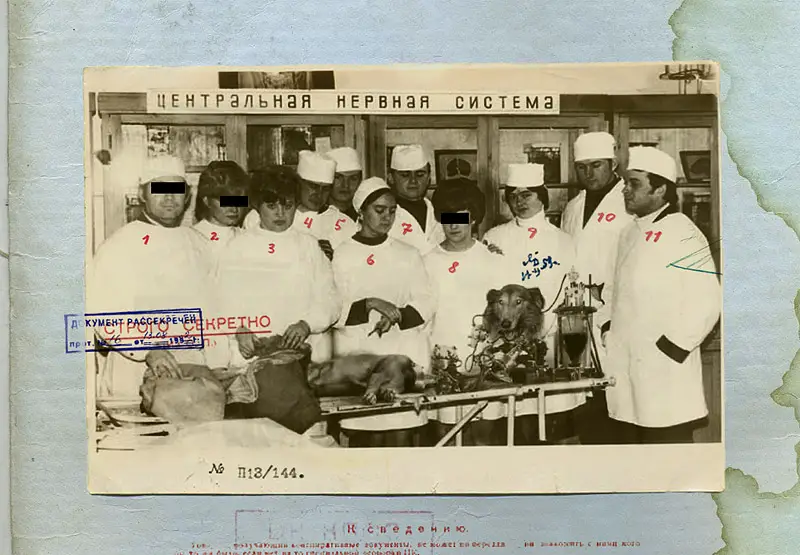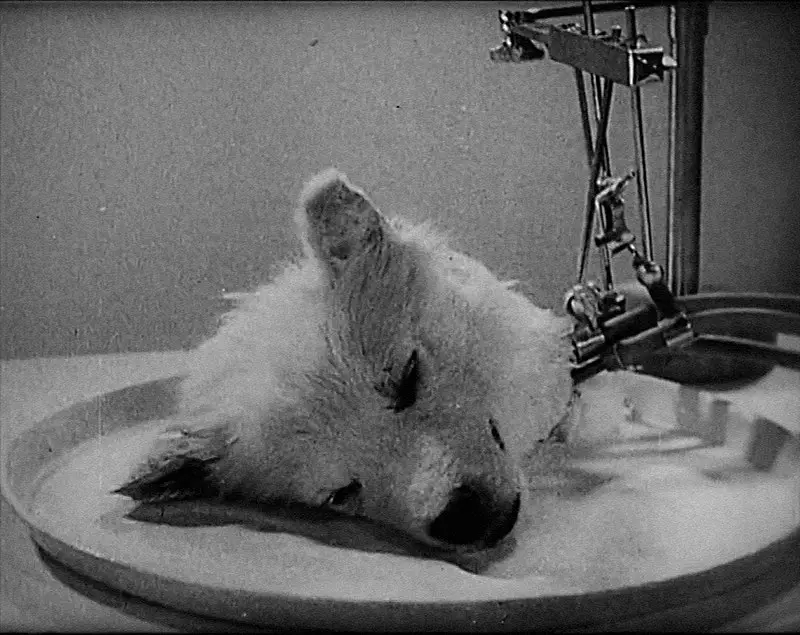 the late 1920s, a groundbreaking experiment was conducted by Soviet scientists in an attempt to keep a severed dog’s head alive for up to an hour. This groundbreaking research, led by Sergei Brukhonenko, was seen as a major milestone in the field of organ transplantation and tissue research and has been used as a point of reference for modern researchers ever since. In this article, we will take a closer look at the experiments conducted by the Soviet scientists, their reactions to them, and the legacy they left behind.
the late 1920s, a groundbreaking experiment was conducted by Soviet scientists in an attempt to keep a severed dog’s head alive for up to an hour. This groundbreaking research, led by Sergei Brukhonenko, was seen as a major milestone in the field of organ transplantation and tissue research and has been used as a point of reference for modern researchers ever since. In this article, we will take a closer look at the experiments conducted by the Soviet scientists, their reactions to them, and the legacy they left behind.
Overview of Soviet Scientists’ Experiments on Dogs
In the late 1920s, Soviet scientists made significant advances in research related to artificial organs and transplants. Led by scientist Sergei Brukhonenko, their pioneering work focused largely on reanimating dead or near-dead organisms and performing major organ transplants. They made incredible progress in fields such as blood transfusion, organ transplantation, and artificial respiration. Most notably, they developed a technique for keeping a severed dog’s head alive for days after it was separated from its body – an incredible feat that has since been used as a point of reference for modern researchers today.
Their innovations soon caught the attention of the international scientific community. American doctor Robert E. Gross praised the Soviet scientists’ efforts, noting that “no other scientist had ever accomplished such successes before.” The experiments conducted by Sergei Brukhonenko and his team revolutionized medical research in this field and opened up new possibilities for further research into artificial organs and transplants.
The techniques developed by the Soviet scientists allowed them to replicate human-like heart activity in animals with artificial hearts. This breakthrough paved the way for future advancements in heart surgery and organ transplantation technology. In addition to this remarkable accomplishment, they also managed to keep a severed dog’s head alive for days after it was cut off from its body – an experiment that has been widely studied since then as a key example of experimental medical science.
Sergei Brukhonenko’s extraordinary achievements are still celebrated today as some of the most important milestones in organ transplantation and tissue research history. His success set a new standard for medical science experiments at the time – one which is still referenced today by modern researchers who are looking to push boundaries in this field even further.
Sergei Brukhonenko and His Research

Throughout his career, Sergei Brukhonenko was a pioneer in the field of medical research and surgery. His revolutionary experiments with artificial hearts and primitive life support systems pushed the boundaries of what was possible in science at the time, allowing for incredible advances in organ transplantation and tissue research which have since been built upon by subsequent generations of scientists. Despite some ethical controversy surrounding his methods, Brukhonenko’s legacy lives on as one of the most important figures in modern medicine.
The Dog’s Head Experiment
In 1928, Soviet scientist Sergei Brukhonenko conducted a groundbreaking experiment that changed the way we think about organ transplantation and tissue research. He was the first to successfully keep a dog’s head alive after it had been severed from its body, by attaching it to a primitive artificial circulation apparatus. This apparatus was powered by an electric pump and tubes filled with saline solution, and allowed the head to remain alive for up to one hour, showing signs of life such as breathing, blinking, and reacting to external stimuli.
This remarkable feat of science demonstrated the potential of organ transplantation and tissue research in ways that had never been seen before. It showed how an animal could be kept alive even without its body – something which was thought impossible at the time – and opened up new possibilities for medical research into this area. The success of this experiment has since become a point of reference for modern researchers looking into organ transplantation or tissue preservation techniques.
The apparatus constructed by Sergei Brukhonenko for his experiment is known as Autojector IV-A (also known as ‘the Dog’s Head Apparatus’) and is now on display in Moscow’s Museum of Science. It consists of several components: an airtight glass box containing the severed dog’s head; two electric pumps connected by hoses filled with saline solution; two glass containers also connected by hoses; a rubber hose connecting the glass box to one container; and a set of electrodes attached to the head itself in order to monitor any brain activity present.
The Autojector IV-A proved that severed organs can be kept alive outside their bodies if they are provided with sufficient oxygenated blood supply while being monitored carefully. This discovery revolutionized medical research into organ transplantation, paving the way for more sophisticated techniques like heart transplants, which are now commonplace in modern medicine today.
Although there have been ethical debates over Brukhonenko’s experiments ever since they were first conducted, it cannot be denied that his innovative work has helped shape modern medical science for many years afterwards. His achievements are still celebrated today as one of the most important figures in medicine history who pushed boundaries beyond what people thought possible at the time – including keeping a dog’s chopped head alive!
Here is also a video from that era showing a diagram of the experiment as well as the dog’s head moving.
Reactions to the Head Transplant
When Sergei Brukhonenko’s experiment to keep a severed dog’s head alive was made public, it sparked a great deal of controversy. Many people were appalled by the inhumane nature of the experiment and voiced their ethical concerns. Animal rights activists argued that the experiment crossed a moral line, and some even called for legal action to be taken against Brukhonenko. Others questioned whether the experiment had any real scientific value and whether it was more of a publicity stunt than anything else.
The Soviet government also distanced itself from the experiment. Although they praised Brukhonenko’s accomplishments, they were unwilling to condone such an ethically questionable activity. As a result, Brukhonenko was never allowed to repeat his experiments or conduct similar research in the future.
The potential implications of successful head transplants were also cause for concern among many people. Some feared that such an accomplishment could lead to horrific consequences, such as creating an immortal being or altering human biology in unpredictable ways. Such worries are still present today despite advancements in medical science and biotechnology that have enabled successful organ transplants on humans without serious complications.
To this day, there are still those who view Sergei Brukhonenko’s experiment as unnecessary or even dangerous. Despite this criticism, however, his achievements remain celebrated as one of the most important figures in modern medicine who pushed boundaries beyond what people thought possible at the time. His pioneering research into organ transplantation and tissue preservation will always be remembered as an incredible milestone in medical science history that has opened up many possibilities for future generations of scientists and doctors alike.
Legacy of Sergei Brukhonenko and His Experiments

The impact of Sergei Brukhonenko and his experiments is unquestionable. His pioneering work in the 20th century was a major milestone in the field of organ transplantation and tissue research, setting a new standard for what could be achieved. This achievement enabled scientists to develop more sophisticated treatments such as heart transplants, leading to enhanced medical care for those who are ill or have suffered trauma or injury.
Although some criticize the ethical implications of Brukhonenko’s experiment, it remains celebrated by many scientists today as a breakthrough moment in medical science history that opened up new realms of possibilities previously thought impossible. Subsequent advances in technology have made further experiments more humane while still advancing medical science.
The legacy of Sergei Brukhonenko lives on to this day through his incredible contribution to medicine, which has resulted in improved treatments for various conditions and diseases across the world. Thanks to his efforts, we now have access to safer organ transplants and life support systems which save countless lives every day.
Avid Writer with invaluable knowledge of Humanity!
Upcoming historian with over 30 million views online.
“You make your own life.”





